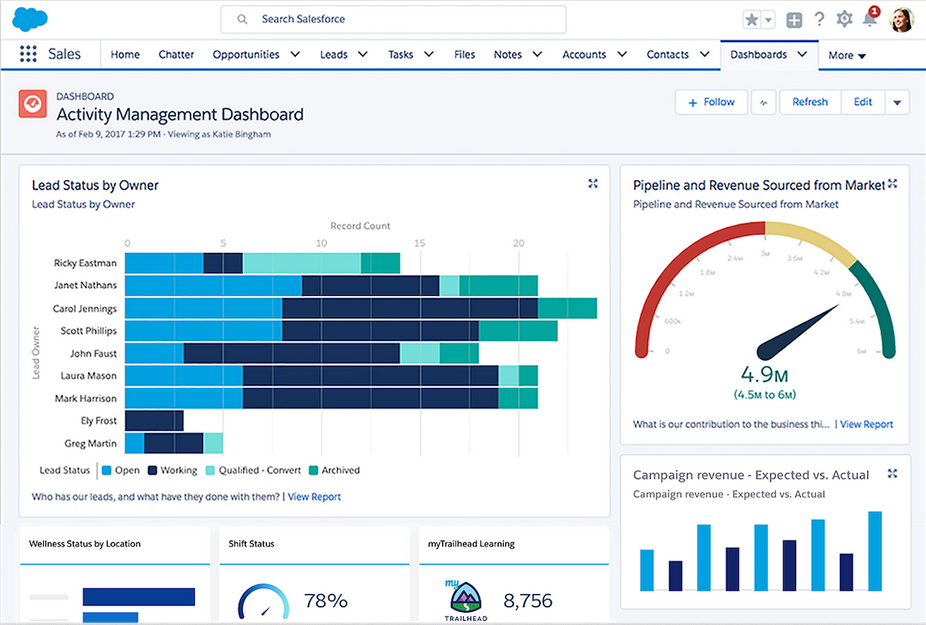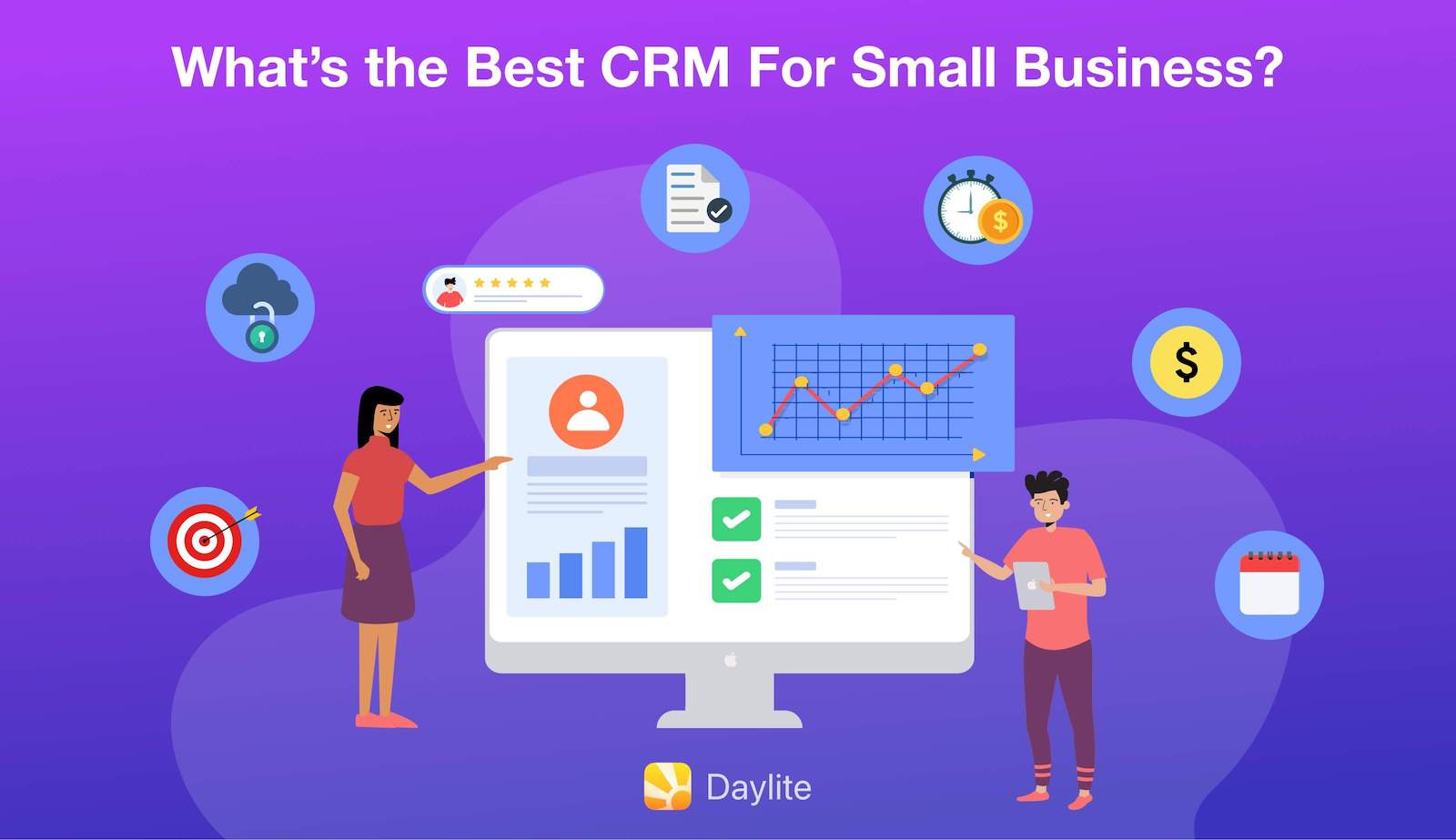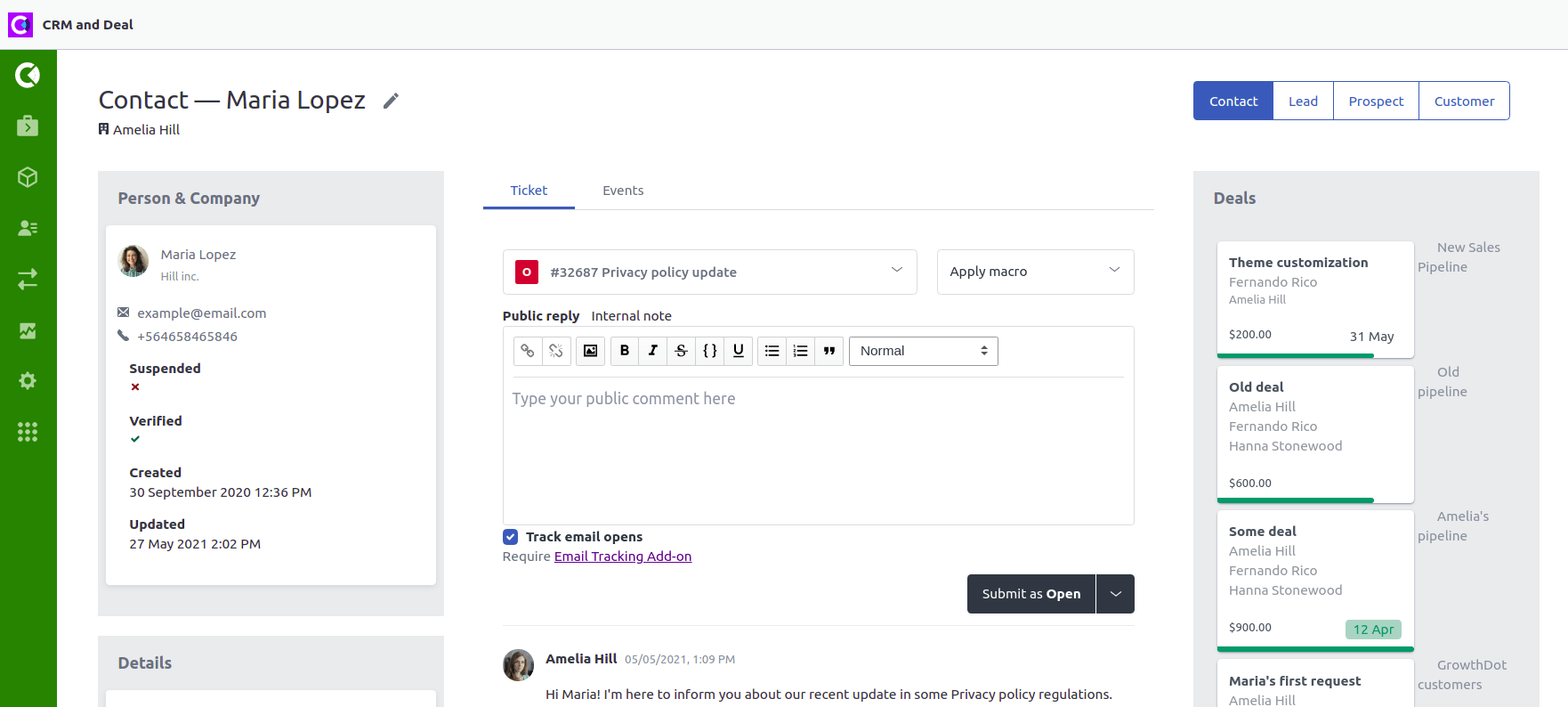
Introduction: Why Your Small Restaurant Needs a CRM
In the bustling world of the culinary arts, where the aroma of freshly baked bread mingles with the sizzle of a perfectly seared steak, small restaurants often face a unique set of challenges. Standing out from the crowd, building a loyal customer base, and maximizing profitability are constant battles. This is where a Customer Relationship Management (CRM) system steps in as a game-changer. It’s not just for the big chains; a CRM can be a small restaurant’s secret weapon.
Think of a CRM as your restaurant’s memory, its digital assistant, and its marketing powerhouse, all rolled into one. It helps you understand your customers better, personalize their experiences, and ultimately, keep them coming back for more. This article delves into the best CRM solutions specifically tailored for small restaurants, exploring their features, benefits, and how they can transform your business.
What is a CRM and Why Does Your Restaurant Need One?
At its core, a CRM is a system that helps you manage your interactions with current and potential customers. It centralizes all your customer data, from their contact information and order history to their preferences and feedback. For a small restaurant, this means you can:
- Know Your Customers: Understand their dining habits, favorite dishes, and dietary restrictions.
- Personalize Experiences: Offer tailored recommendations, birthday discounts, and special promotions.
- Improve Communication: Send targeted emails, SMS messages, and push notifications.
- Streamline Operations: Automate tasks like reservation management and feedback collection.
- Boost Sales and Loyalty: Encourage repeat business and increase customer lifetime value.
Without a CRM, you might be relying on memory, sticky notes, or spreadsheets to keep track of your customers. This approach is inefficient, prone to errors, and limits your ability to provide personalized service. A CRM empowers you to build stronger relationships, improve customer satisfaction, and drive revenue growth.
Key Features to Look for in a CRM for Small Restaurants
Choosing the right CRM is crucial. Here are the essential features to consider:
1. Contact Management
This is the foundation of any CRM. It should allow you to:
- Store customer contact information (name, phone number, email address, etc.).
- Organize customer data with tags and segments (e.g., “vegetarian,” “frequent diner,” “birthday this month”).
- Import and export data easily.
2. Reservation Management
For restaurants that take reservations, this is a must-have feature. Look for a CRM that allows you to:
- Manage reservations online and over the phone.
- Track table availability.
- Send automated confirmation and reminder emails.
3. Order History and Preferences
Knowing what your customers like to order is key to personalization. The CRM should track:
- Past orders, including dishes and modifications.
- Dietary restrictions and allergies.
- Customer preferences (e.g., seating preferences, preferred beverages).
4. Marketing Automation
This feature helps you automate marketing tasks, such as:
- Sending targeted email campaigns (e.g., birthday greetings, special offers).
- Automating SMS marketing.
- Creating customer segments for targeted promotions.
5. Feedback and Reviews
Gathering customer feedback is essential for improvement. The CRM should facilitate:
- Collecting customer reviews and ratings.
- Managing online reputation.
- Tracking customer satisfaction.
6. Reporting and Analytics
Data is your friend. The CRM should provide insights into:
- Customer demographics and behavior.
- Sales trends.
- Marketing campaign performance.
7. Integrations
The CRM should integrate with other tools you use, such as:
- Point of Sale (POS) systems.
- Online ordering platforms.
- Social media platforms.
Top CRM Solutions for Small Restaurants
Now, let’s explore some of the best CRM solutions specifically designed for small restaurants:
1. Upserve (Now Lightspeed Restaurant)
Upserve, now part of Lightspeed Restaurant, is a comprehensive platform with a strong focus on restaurant operations. It offers robust features for:
- Table Management: Optimize seating arrangements and reduce wait times.
- Order Management: Streamline order processing and improve accuracy.
- Payment Processing: Integrate with various payment gateways.
- Customer Profiles: Create detailed customer profiles with order history and preferences.
- Marketing Tools: Send targeted email campaigns and track performance.
- Analytics: Gain insights into sales trends, customer behavior, and menu performance.
Pros: Comprehensive features, strong analytics, good for restaurants of all sizes, excellent for operations and data-driven decision making.
Cons: Can be expensive for very small restaurants, some features may be overkill for basic needs.
2. Toast
Toast is a popular POS and restaurant management system that includes CRM capabilities. It’s a great choice if you’re looking for an all-in-one solution. Key features include:
- POS System: Handle orders, payments, and inventory management.
- Customer Database: Collect and store customer data.
- Loyalty Programs: Reward repeat customers with points and discounts.
- Online Ordering: Offer online ordering and delivery options.
- Marketing Tools: Send targeted email campaigns and SMS messages.
Pros: All-in-one solution, easy to use, good for restaurants that want a fully integrated system, specifically designed for the restaurant industry.
Cons: Can be expensive, may not be the best choice if you already have a POS system you like.
3. Hubspot CRM
HubSpot is a versatile CRM platform that can be adapted for various businesses, including restaurants. While it may not be specifically designed for the restaurant industry, it offers a powerful set of features that can be customized to meet your needs. Key features include:
- Contact Management: Store and organize customer data.
- Email Marketing: Send targeted email campaigns.
- Marketing Automation: Automate tasks like lead nurturing and follow-up.
- Reporting and Analytics: Track campaign performance and customer behavior.
- Integrations: Integrate with various third-party apps.
Pros: Free plan available, highly customizable, integrates with many other tools, scalable for growing businesses.
Cons: Not specifically designed for restaurants, requires some setup and customization.
4. SevenRooms
SevenRooms is a CRM and guest experience platform that focuses on building direct relationships with guests. It’s a good choice for restaurants that want to provide a premium guest experience. Key features include:
- Reservation Management: Manage reservations, waitlists, and seating.
- Guest Profiles: Build detailed guest profiles with preferences and history.
- Marketing Automation: Send personalized emails and SMS messages.
- Loyalty Programs: Create and manage loyalty programs.
- Table Management: Optimize seating arrangements.
Pros: Focus on guest experience, strong reservation management, good for restaurants that want to provide personalized service.
Cons: Can be expensive, may not be suitable for restaurants with very basic needs.
5. OpenTable
OpenTable, while primarily known for its online reservation platform, also offers CRM features that are beneficial for restaurants. Features include:
- Online Reservations: Manage online reservations.
- Customer Profiles: Store customer data from reservations.
- Marketing Tools: Send email campaigns to promote your restaurant.
- Guest Feedback: Collect guest feedback and reviews.
Pros: Large network of users, easy to use, good for restaurants that want to increase online visibility.
Cons: Can be expensive, OpenTable takes a commission on reservations.
Choosing the Right CRM for Your Restaurant: A Step-by-Step Guide
Selecting the right CRM is a crucial decision that can significantly impact your restaurant’s success. Here’s a step-by-step guide to help you make the right choice:
1. Assess Your Needs
Before you start evaluating CRM solutions, take some time to assess your restaurant’s specific needs. Consider:
- Your current processes: How do you currently manage reservations, customer data, and marketing?
- Your goals: What do you want to achieve with a CRM? (e.g., increase customer loyalty, drive sales, improve customer service).
- Your budget: How much are you willing to spend on a CRM?
- Your technical skills: How comfortable are you and your staff with technology?
- The size of your restaurant: Do you need a system that can scale as your business grows?
2. Research CRM Options
Once you know your needs, research the different CRM options available. Consider the solutions mentioned above (Upserve/Lightspeed, Toast, HubSpot, SevenRooms, OpenTable) and others that may be a good fit for your restaurant. Read reviews, compare features, and check pricing.
3. Prioritize Essential Features
Based on your needs, prioritize the essential features you need in a CRM. Make a list of must-have features and nice-to-have features. Ensure that the CRM you choose has all the must-have features.
4. Consider Integrations
Think about the other tools you use in your restaurant, such as your POS system, online ordering platform, and social media platforms. Ensure that the CRM you choose integrates with these tools. This will streamline your operations and ensure data consistency.
5. Evaluate Pricing and Plans
CRM solutions offer different pricing plans, ranging from free plans with limited features to premium plans with advanced capabilities. Evaluate the pricing plans and choose the one that best fits your budget and needs. Be sure to consider any hidden costs, such as setup fees or training costs.
6. Request Demos and Trials
Most CRM providers offer demos or free trials. Request a demo or sign up for a free trial to get a feel for the software. This will give you a chance to explore the features, test the user interface, and see if the CRM is a good fit for your restaurant.
7. Get Feedback from Your Staff
Involve your staff in the decision-making process. Ask them for their input and feedback on the different CRM options. They will be the ones using the CRM on a daily basis, so their input is valuable.
8. Make Your Decision
After evaluating all the options, make your decision. Choose the CRM that best meets your needs, fits your budget, and is easy to use. Don’t be afraid to ask questions and get help from the CRM provider during the setup process.
9. Implement and Train Your Staff
Once you’ve chosen a CRM, it’s time to implement it. This involves setting up the software, importing your data, and training your staff on how to use it. Make sure you provide adequate training and support to your staff to ensure they can use the CRM effectively.
10. Monitor and Optimize
After implementing the CRM, monitor its performance and make adjustments as needed. Track key metrics, such as customer retention rate, customer lifetime value, and marketing campaign performance. Use this data to optimize your CRM strategy and improve your results.
Benefits of Using a CRM for Small Restaurants
Implementing a CRM system offers a multitude of advantages that can significantly improve a small restaurant’s performance. Here’s a breakdown of the key benefits:
1. Enhanced Customer Relationships
At the heart of any successful business lies strong customer relationships. A CRM empowers you to build and nurture these relationships by:
- Personalizing Interactions: By understanding customer preferences and history, you can tailor your service to meet their individual needs.
- Improving Communication: CRM facilitates targeted and timely communication through email, SMS, and other channels.
- Building Loyalty: Personalized offers, birthday greetings, and exclusive promotions foster customer loyalty and encourage repeat business.
2. Increased Sales and Revenue
A CRM can directly contribute to increased sales and revenue by:
- Identifying Upselling Opportunities: By knowing a customer’s past orders, you can suggest complementary items or upgrades.
- Targeted Marketing: Segmenting your customer base allows you to send targeted promotions and offers, increasing the likelihood of conversions.
- Boosting Repeat Business: Loyalty programs and personalized experiences keep customers coming back for more.
3. Improved Operational Efficiency
CRM systems streamline various operational tasks, leading to increased efficiency:
- Automated Tasks: Automate tasks like reservation management, confirmation emails, and follow-up communications.
- Centralized Data: Centralize customer data, eliminating the need for manual data entry and reducing the risk of errors.
- Streamlined Processes: Streamline processes like order taking, table management, and feedback collection.
4. Better Customer Service
Providing excellent customer service is crucial for success. A CRM helps you:
- Provide Personalized Service: Access customer preferences and history to provide tailored recommendations and service.
- Resolve Issues Quickly: Track customer feedback and complaints and respond promptly.
- Improve Customer Satisfaction: Proactively address customer needs and concerns to improve overall satisfaction.
5. Data-Driven Decision Making
CRM systems provide valuable data and insights that can inform your decision-making process:
- Track Key Metrics: Monitor customer demographics, purchase history, and marketing campaign performance.
- Identify Trends: Identify trends in customer behavior and sales to make informed decisions.
- Optimize Marketing Efforts: Track the performance of your marketing campaigns and make adjustments to improve results.
How to Implement a CRM in Your Small Restaurant
Successfully implementing a CRM in your small restaurant requires careful planning and execution. Here’s a step-by-step guide:
1. Planning and Preparation
Before you start, define your goals, assess your needs, and choose a CRM solution. Identify the key features you need and the integrations you require. This will help you set up the system effectively.
2. Data Migration
If you already have customer data, you’ll need to migrate it to your new CRM. This may involve importing data from spreadsheets, databases, or other systems. Ensure that your data is clean, accurate, and properly formatted before importing it.
3. System Configuration
Configure the CRM to meet your specific needs. Set up user accounts, customize fields, and configure integrations with other systems. This may involve setting up email templates, creating customer segments, and configuring marketing automation rules.
4. Training and Onboarding
Train your staff on how to use the CRM. Provide them with the necessary training materials, documentation, and support. Ensure that everyone understands how to use the system and how to enter and access customer data. The more your team understands the CRM’s functionality, the more successful its implementation will be.
5. Testing and Validation
Test the system thoroughly before going live. Test all the features, integrations, and workflows. Validate the data to ensure that it is accurate and complete. This will help you identify and fix any issues before they impact your customers.
6. Go Live and Monitor
Once you’re confident that the system is working properly, go live. Monitor the system closely and address any issues that arise. Track key metrics, such as customer engagement, sales, and marketing campaign performance. Make adjustments as needed to optimize your results.
7. Ongoing Optimization
CRM implementation is an ongoing process. Continuously optimize your CRM strategy by analyzing data, experimenting with new features, and refining your processes. Keep your staff trained and updated on the latest features and best practices.
Tips for Success: Maximizing the Benefits of Your CRM
To truly harness the power of a CRM for your small restaurant, keep these tips in mind:
- Keep Data Accurate and Up-to-Date: Regularly update customer information to ensure data accuracy.
- Train Your Staff Effectively: Provide comprehensive training to ensure staff are proficient with the CRM.
- Personalize Your Communication: Tailor your communications based on customer data and preferences.
- Use Segmentation to Target Marketing: Segment your customer base for more effective marketing campaigns.
- Track and Analyze Key Metrics: Monitor key metrics to measure the CRM’s impact on your business.
- Integrate with Other Systems: Integrate your CRM with your POS, online ordering, and other systems for a seamless experience.
- Solicit Customer Feedback: Encourage customer feedback to improve your service and offerings.
- Stay Consistent: Use the CRM consistently for all customer interactions.
- Seek Support and Training: Utilize the CRM provider’s support and training resources.
Conclusion: Embracing CRM for a Thriving Restaurant
In today’s competitive restaurant industry, embracing a CRM system is no longer a luxury, but a necessity. By choosing the right CRM and implementing it effectively, small restaurants can build stronger customer relationships, drive sales, improve operational efficiency, and ultimately, thrive. From personalized service to data-driven decision-making, a CRM equips you with the tools you need to create a loyal customer base and achieve long-term success.
The journey to implementing a CRM may seem daunting at first, but the rewards are well worth the effort. By understanding your customers better, personalizing their experiences, and streamlining your operations, you can transform your restaurant into a place where customers feel valued and keep coming back for more. So, take the leap, explore the options, and empower your small restaurant with the power of a CRM. Your success story awaits!

